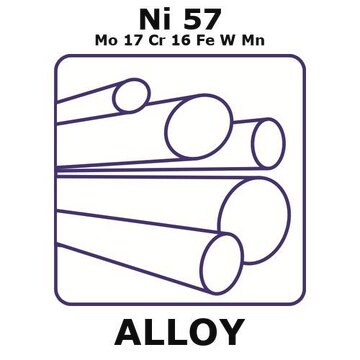GF12154171
Aluminum
sphere, 200pcs, diameter 6.0mm, 99%
Synonym(s):
Aluminum, AL006860
Sign Into View Organizational & Contract Pricing
All Photos(2)
About This Item
Empirical Formula (Hill Notation):
Al
CAS Number:
Molecular Weight:
26.98
MDL number:
UNSPSC Code:
12352300
PubChem Substance ID:
NACRES:
NA.23
Recommended Products
Assay
99%
form
spheres
autoignition temp.
1400 °F
manufacturer/tradename
Goodfellow 121-541-71
resistivity
2.6548 μΩ-cm
particle size
6.0 mm
bp
2460 °C (lit.)
mp
660.37 °C (lit.)
density
2.7 g/mL at 25 °C (lit.)
SMILES string
[Al]
InChI
1S/Al
InChI key
XAGFODPZIPBFFR-UHFFFAOYSA-N
General description
For updated SDS information please visit www.goodfellow.com.
Legal Information
Product of Goodfellow
Storage Class Code
13 - Non Combustible Solids
WGK
WGK 3
Flash Point(F)
Not applicable
Flash Point(C)
Not applicable
Choose from one of the most recent versions:
Certificates of Analysis (COA)
Lot/Batch Number
It looks like we've run into a problem, but you can still download Certificates of Analysis from our Documents section.
If you need assistance, please contact Customer Support.
Already Own This Product?
Find documentation for the products that you have recently purchased in the Document Library.
M A Santos et al.
Current medicinal chemistry, 19(17), 2773-2793 (2012-03-30)
This review is focused on recent developments on hydroxypyri(mi)dines, as aluminum and actinide chelating agents to combat the toxicity due to accumulations of these metal ions in human body resulting from excessive metal exposure. After a brief update revision of
Maire E Percy et al.
Journal of inorganic biochemistry, 105(11), 1505-1512 (2011-11-22)
In 1991, treatment with low dose intramuscular desferrioxamine (DFO), a trivalent chelator that can remove excessive iron and/or aluminum from the body, was reported to slow the progression of Alzheimer's disease (AD) by a factor of two. Twenty years later
C A Shaw et al.
Immunologic research, 56(2-3), 304-316 (2013-04-24)
We have examined the neurotoxicity of aluminum in humans and animals under various conditions, following different routes of administration, and provide an overview of the various associated disease states. The literature demonstrates clearly negative impacts of aluminum on the nervous
Stephen C Bondy
Toxicology, 315, 1-7 (2013-11-06)
Aluminum is one of the most common metal elements in the earth's crust. It is not an essential element for life and has commonly been thought of as a rather inert and insoluble mineral. Therefore, it has often been regarded
Rejane C Marques et al.
Environmental pollution (Barking, Essex : 1987), 187, 130-135 (2014-02-04)
We studied neurodevelopment in infants from two communities. Children living in the vicinity of tin-ore kilns and smelters - TOKS; n = 51) were compared to children from a fishing village (Itapuã; n = 45). Mean hair-Hg (HHg) concentrations were significantly higher in Itapuã
Our team of scientists has experience in all areas of research including Life Science, Material Science, Chemical Synthesis, Chromatography, Analytical and many others.
Contact Technical Service




